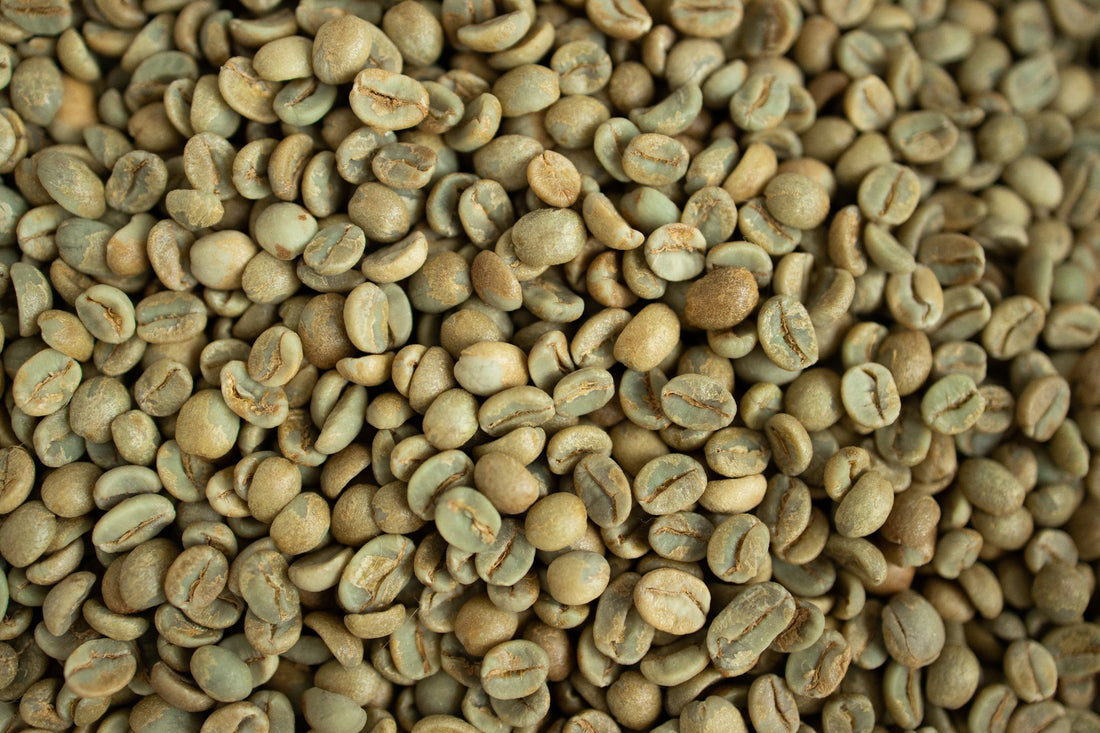Green coffee beans have exploded (not literally) in recent years, partly down to the third-wave coffee movement, but also because of some tenuous weight loss claims made by a TV doctor over in the USA.
In this article we are going to take a deep dive into everything green coffee related? Is it healthy? How do you drink it and how to grind green coffee beans at home? Read on for more.
What are green coffee beans?
Green coffee beans are not a special, alternative type of bean, known only to the initiated. They are simply coffee beans in their raw, unroasted state, once they have been removed from the coffee cherry. Search volumes for the stuff have gone through the roof thanks to the aforementioned claims, as well as their high levels of active chlorogenic acid: a component which is largely lost in the roasting process, and which has been touted as a new wonder drug.
Are green coffee beans good for you?
Coffee, in general, has amazing health benefits (such as a reduced risk of heart, liver, brain, bowel and glucose sugar issues, to name a few), but there is ever-growing research that the parts that we lose by roasting coffee could have an even greater impact on our health.
One of these is the natural antioxidant chlorogenic acid, the supposed weight loss cure. It’s not all wishful thinking, however: tests have shown it does have positive effects on the body, such as reducing your risk of cardiovascular problems and high blood pressure, as well as the potential to increase your metabolism, and better regulate blood sugar.
These benefits could be countered by another component found in all coffee beans: caffeine. Yet while green coffee beans technically contain more caffeine than roasted coffee, due to their toughness and the difficulty of successful extraction from them, any drink made with green beans will have significantly less caffeine than those made with roasted beans. For a cup of green coffee, you are looking at 20mg of caffeine, compared to 100mg of an average cup of regular coffee (although this will depend greatly on the brew type, coffee used, and many other variables).
If you are new to drinking coffee - green or otherwise - it’s worth remembering that caffeine can lead to side effects such as anxiety, headaches, irritability, irregular heartbeats and ringing in the ears if consumed in large quantities. It can also exacerbate pre-existing cardiovascular and blood pressure problems, and can affect how some medications perform. Always talk to your doctor if you are contemplating altering your caffeine intake.
What does green coffee taste like?
Before you consider grinding green coffee beans at home, you need to understand how the flavour, colour and even texture will differ from what we know and love as a regular cup of coffee. This is because a large portion of the properties we identify as coffee(such as flavour) actually only occur once it has been roasted, when a process known as the Maillard reaction occurs: essentially a chemical reaction between carbohydrates and amino acids that alter and release the taste, aroma and variations in nutritional content that we known coffee for. This is also what turns the beans brown; how dark depends on the type of bean and the time it is roasted for.
When you make a coffee from unroasted green beans, you will get a much milder taste. In a blind taste test, many couldn’t identify it as coffee at all, with some reporting that it tastes more like grass or herbal tea. If you are after the health benefits rather than an alternative to coffee, this may be up your street - but if not, try adding honey, cinnamon or vanilla to the concoction to make it more palatable.
How to grind green coffee beans
Good luck. No really: there is a reason why we have, for centuries, been roasting coffee beans before we grind them. Roasted coffee beans are brittle and dry, and easy to crack. Raw, green coffee beans are incredibly tough, and as they still contain moisture, can be a real nuisance when trying to grind in any traditional way, they are basically like gravel and just as hard!
If you are determined to try learning how to grind green coffee, be aware that they may break your grinder, so avoid starting out using your expensive burr grinding machine. Instead try using a blender, cheap blade grinder, or our suggestions for how to grind coffee beans without a grinder.
Once you have ground your beans to a consistency that you are happy with (a medium-fine grind is considered best for general drinking), go ahead and brew the coffee as you would any other coffee type. Again, as they still have a small water content, they will look very different to regular coffee grounds in both colour and texture. The most popular way of preparing the ground coffee is simply steeping it in off-boiling water for up to three minutes before filtering.
How to brew green coffee beans
If the idea of the rigmarole of grinding green coffee beans has put you off, there is still another way to drink green coffee. It takes a little longer to prepare, but some people seem to like the results.
- Soak the green coffee beans in water overnight with a ratio of 3:1 water to beans.
- Next day, bring the water and beans to boil and simmer for 10-15 minutes.
- Allow to cool and drain away the beans. The water is what you keep and drink. It can be kept in a fridge (à la cold brew) for a few days.
How long do green coffee beans keep for?
Green coffee beans are a good option for longevity, as freshly roasted beans last 4-6 weeks for optimal freshness. Ground coffee beans last a much shorter time, in fact you can lose up to 80% of the flavour after only a few hours of grinding, with the quality decreasing as time goes on.
Green coffee beans keep for much longer. Exactly how much longer will depend on the state that they were in when they made their way to you, but 6-8 months is a good ballpark figure. Bear in mind that they are a raw material, which means they will go off just the same as any other perishable item would, given time. Of course, how long a fresh item lasts will depend on how long it has been since it was picked, so make sure you source your coffee from a reputable supplier (such as the Coffee Bean Shop!) to ensure you get the freshest beans possible, and not ones that have been sitting on a shelf for months.
To check that they are fresh, make sure that they are not dried out or mouldy. They should be slightly green (although some varieties appear more white), soft to the touch when pressure is applied, and ever so slightly glossy. The key to keeping them fresh lies in keeping them in an airtight container and away from moisture, sunlight and high temperatures - so not next to your oven or coffee machine! Aim for room temperature, and watch over them to make sure mould does not form, as kitchens can be humid places.
So yes, green coffee beans can be good for you, and can technically be ground and/or brewed, though the flavour is often not to coffee lovers’ tastes If you are determined to get the health benefits from green beans, it might be best to stick to powder extract or tablets, and keep the fresh green coffee beans to roast yourself at home, the way coffee beans were intended.
Whatever you decide to do with your green coffee beans, take a look at our incredible selection of green coffee beans, carefully chosen from the best plantations from all around the globe. Plus, each listing comes with tips on how to make the most of that particular bean type when roasting at home, so there’s no reason not to start your small batch roasting journey today!

